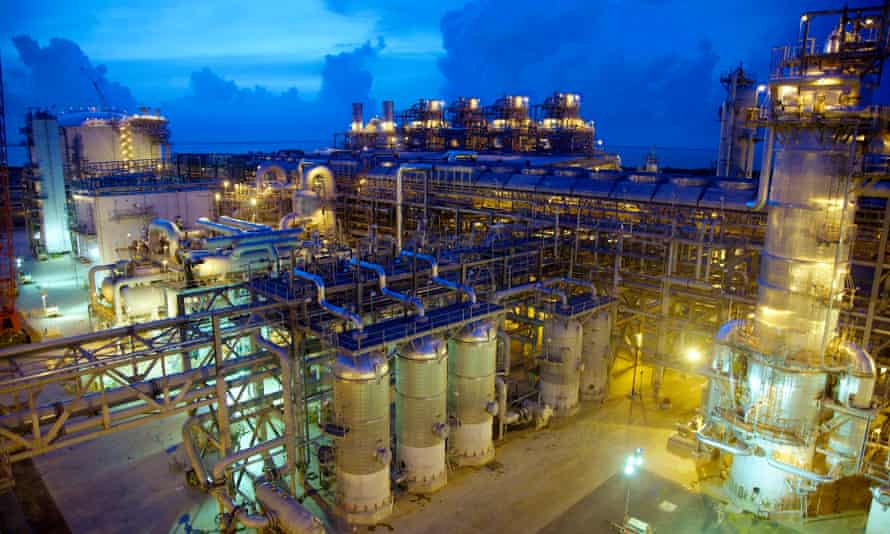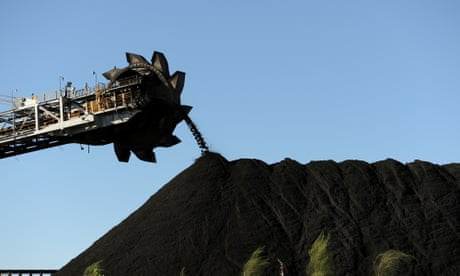Extract from The Guardian
Carbon capture and storage (CCS)
Santos liquified natural gas scheme among six projects to receive public support.

Last modified on Tue 8 Jun 2021 21.36 AEST
The Morrison government has announced the first $50m in grants from a new carbon capture, use and storage (CCS) fund, including awarding up to $15m to gas company Santos and $5m to a coal power project owned by mining giant Glencore.
The funding is drawn from a promised $263.7m for the controversial technology, which most often involves capturing industrial greenhouse gas emissions as they are released and injecting them underground.
Santos will receive public support for its long-mooted Moomba liquified natural gas (LNG) export project in the Cooper Basin in South Australia. The company says it is expected to store 1.7m tonnes of carbon dioxide a year.
Up to $5m is dedicated to the Carbon Transport and Storage Company, a project wholly owned by Glencore, to help trial the viability of CCS at a Queensland coal-fired power station and develop a geological storage basin in the Surat Basin.
Three other projects to win backing promise to use the captured CO2 in product development, rather than store it underground. The sixth is for Australia’s first demonstration of direct-air capture and storage, an energy-intensive “negative emissions” technology that is intended to draw emissions from the atmosphere and bury them underground.

CCS has been a contentious area of public policy in Australia, having been promised billions of dollars in public funding for little result. The first significant project in Australia, Chevron’s Gorgon liquefied natural gas development in the Pilbara, started operating in 2019 after years of delay before it stopped working properly earlier this year.
Globally, it has not proven commercially viable in reducing emissions from coal power, and supporters say it is more likely to play a role at industrial sites. Both the International Energy Agency and the Intergovernmental Panel on Climate Change have said it has a role in addressing the climate crisis. Opponents say it has failed to deliver on scale over two decades and takes funding away from cheaper clean technology.
It was “further proof of the viability and importance of carbon capture technologies”, he said. “The projects we have supported through this program include a number of exciting, Australian-first technology demonstrations,” he said.
Santos said its grant was recognition of the “national and international significance” its $210m CCS project in the South Australian outback. Its chief executive, Kevin Gallagher, said it would be one of the cheapest CCS projects in the world, with burial costing $25 to $30 a tonne and pushing for the Morrison government’s goal of less than $20 a tonne.
Gallagher said he was “looking forward” to a final investment decision on the project later this year.
Richie Merzian, the Australia Institute’s climate and energy director, said the announcement suggested the government’s policy was “failed technologies, not taxes”.
“We know CCS has already benefited from $1.3bn in support and there is not a single fully operational project in Australia to show from it,” he said. “Even the department of energy admitted that they don’t expect any emissions reductions from CCS in the next 20 years under the government’s technology investment roadmap.”
Taylor last year named CCS as one of five priorities that would receive taxpayer backing through the government’s “technology, not taxes” approach to emissions reduction. Others nominated in the government’s first low-emissions technology statement were “clean” hydrogen, soil carbon, energy storage and low-emissions steel and aluminium.
The projects to receive funding other than Santos and Glencore were:
Up to $14.6m for Mineral Carbonation International to help build a mobile demonstration plant on Kooragang Island, New South Wales, that uses CO2 to produce manufacturing and construction materials, such as concrete, plasterboard and fire-retardant materials.
Up to $9m for Energy Developments Pty Ltd to use CO2 emitted from the production of biomethane at landfill sites in cement carbonation curing.
Up to $4m for Corporate Carbon Advisory Pty Ltd for Australia’s first demonstration of a direct-air capture and storage project to geologically sequester CO2 in an existing injection well in Moomba, South Australia.
Up to $2.4m for Boral Limited for a pilot-scale CO2-use project to improve the quality of recycled concrete, masonry and steel slag aggregates at New Berrima, NSW.
Taylor said the six projects would create “close to 470 direct jobs and deliver $412m of investment, much of this in regional areas”.
The Morrison government also announced that the Australian Renewable Energy Agency would invest $15m in a pilot “solar hydro” power plant at Carwarp, in northwest Victoria. Taylor said the “innovative” technology, to be built by the company RayGen, would offer up to 17 hours energy storage.
Australia’s industrial emissions have risen significantly since 2005, the baseline year against which the country pledged to cut carbon pollution under the Paris climate agreement, but overall emissions are down due to reductions from land-clearing and electricity generation. Official projections released in December said the Morrison government was not yet on track to meet its 2030 target, a 26% to 28% cut.

No comments:
Post a Comment